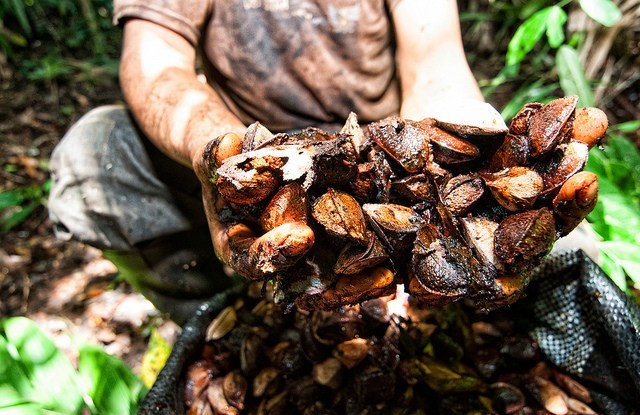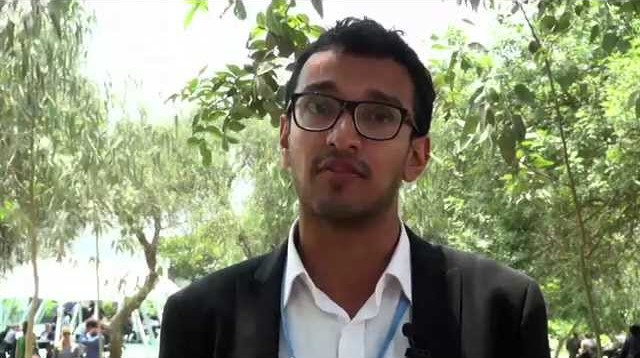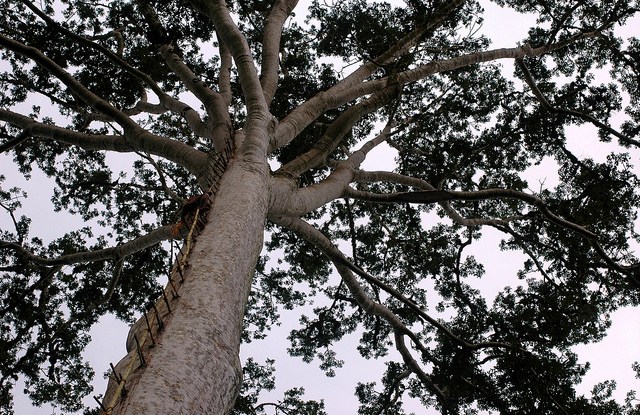
LIMA, Peru—For REDD+ benefit-sharing arrangements to function well, their design must be consultative and seen as legitimate by communities on the ground, a new study in Peru has found.
REDD+, or Reducing Emissions from Deforestation and forest Degradation, is a results-based scheme that aims to reduce emissions from deforestation and forest degradation by giving people in tropical countries incentives to keep their forests standing.
A key concern for emerging REDD+ initiatives is how those incentives are best shared among different people in the community.
In Peru, national policies for REDD+ benefit sharing are still in their infancy, says Ashwin Ravikumar, a post-doctoral fellow at the Center for International Forestry Research (CIFOR) and co-author of a new brief on the subject.
“Policies that govern how benefits should be shared from the national to the subnational down to the project level have been really slow to emerge,” Ravikumar said.
DO-IT-YOURSELF DISTRIBUTION
This delay means subnational and project-based initiatives in Peru have innovated, developing their own, ad-hoc benefit-sharing arrangements, he said—and they can offer some useful lessons.
Regional actors in the provinces of Madre de Dios and San Martín have independently formed their own roundtables to discuss and negotiate REDD+ development, which has fostered coordination between government and civil society.
In Madre de Dios, the REDD+ roundtable has been the focal point of a regional coalition of different groups interested in low-emissions development, and coordinated the establishment of regional deforestation reference levels in 2013.
While these spaces present great opportunities for coordination among different actors, in practice their inclusiveness has been limited, Ravikumar says.
The paper found that local governments, as well as indigenous and producer organizations, are poorly represented in these roundtables. Meanwhile, branches of government managing the agriculture and mining sectors—important drivers of land-use change—have not participated.
NO CASH? NO PROBLEM
A second key finding was that among these initiatives in Peru, non-monetary benefits have been much more common than cash payments.
REDD+ was initially envisaged as a “payments for environmental services” (PES) scheme—but this has faced a few hurdles, most notably a shortage of money to be shared with communities.
“REDD+ projects … have faced serious challenges because an international carbon market has been slow to emerge—we don’t really have a robust, functioning carbon market with serious financial commitments from developed-country partners,” Ravikumar said.
Without such commitments, project proponents and REDD+ subnational initiatives have focused on other kinds of incentives, such as offering capacity building, technical and legal assistance, alternative livelihood strategies and reducing threats to land tenure security.
Based on our evidence, it seems to be the case that there is no substitute for broad consultation
The REDD+ project in Madre de Dios, for example, is run by Bosques Amazonicos (BAM), a private company that has partnered with an association of Brazil nut collectors.
“Rather than simply trying to measure, report, certify and sell carbon, they’ve tried to invest in the forest. They have faced challenges along the way, and it’s not clear yet how those are going to be resolved—but the goal is to invest in a Brazil nut processing plant,” Ravikumar said.
“The idea is the plant will move the Brazil nut collectors up the value chain, increasing their incomes and improving their livelihoods. Carbon can be sold along with that, but it’s not necessarily central to it,” he said.
BETTER TOGETHER
A third key finding was that these benefit-sharing arrangements function better when they are developed through a process that communities view as legitimate.
“Broad consultations are really key, and over-reliance on one or two representatives from a community, instead of real meaningful broad consultations, can actually be problematic for legitimacy,” Ravikumar said.
The paper recommends proponents consider expanding the involvement of local participants in the design and oversight of the initiative, as a way to increase local identification and support.
At the same time, they could hold regular workshops that are more accessible to all stakeholders to discuss specific issues related to project design, it says.
“Based on our evidence, it seems to be the case that there is no substitute for broad consultation,” Ravikumar said.
“There may be ways to select representatives in such a way that it’s more democratic and encourages the legitimacy of these processes—but project proponents and policy makers need to continue to think creatively about that.”
For more information about this research, contact Ashwin Ravikumar at ashwin.r@cgiar.org.
CIFOR’s Global Comparative Study on REDD+ is supported in part by the CGIAR Research Program on Forests, Trees and Agroforestry and by NORAD, AusAID, DFID and the European Commission.
We want you to share Forests News content, which is licensed under Creative Commons Attribution-NonCommercial-ShareAlike 4.0 International (CC BY-NC-SA 4.0). This means you are free to redistribute our material for non-commercial purposes. All we ask is that you give Forests News appropriate credit and link to the original Forests News content, indicate if changes were made, and distribute your contributions under the same Creative Commons license. You must notify Forests News if you repost, reprint or reuse our materials by contacting forestsnews@cifor-icraf.org.

